Learn how to make delicious and easy homemade Teriyaki Sauce the authentic Japanese way. You only need four ingredients! Sweet, savory, and versatile, it will be your go-to sauce for chicken, salmon, tofu, pork, and even meatballs.
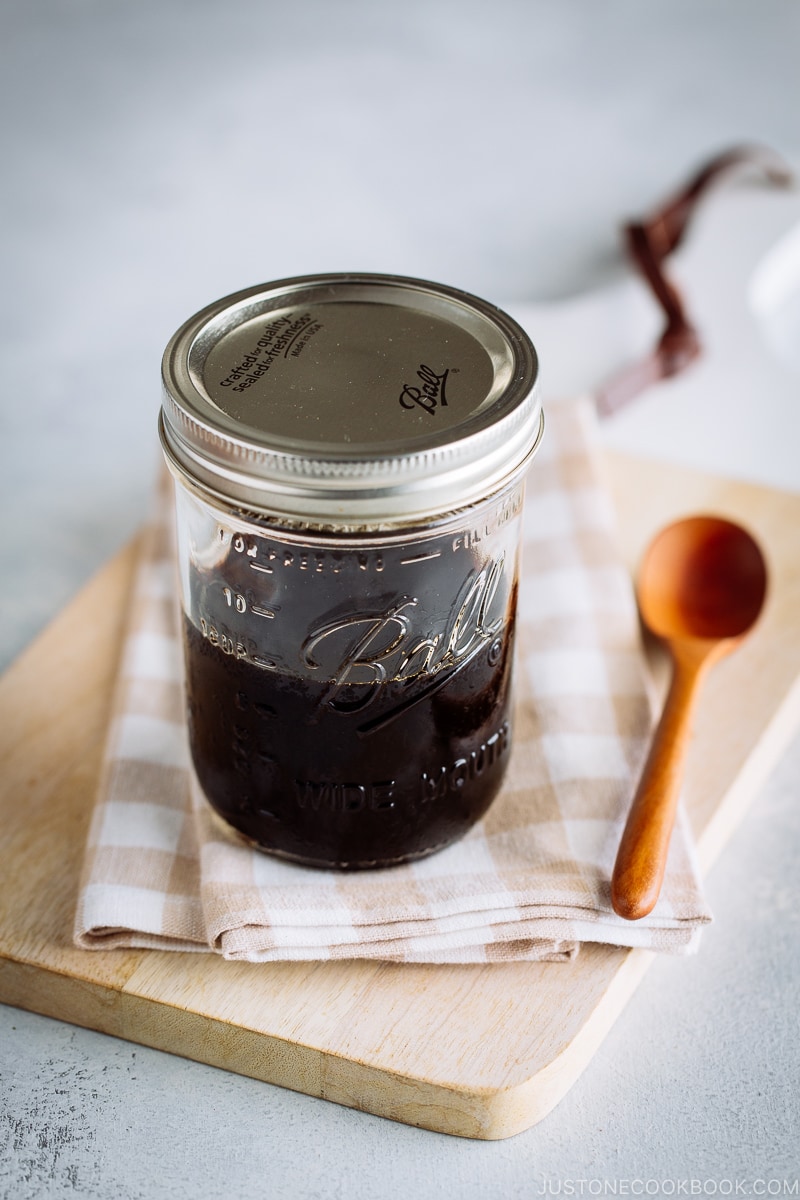
Savory and versatile, Teriyaki Sauce (照り焼きのたれ) is now the mainstay seasoning outside of Japan. Many of you have asked me if you could make your own homemade teriyaki sauce without having to get the store-bought stuff. I am happy that you asked because most Japanese home cooks actually make our own sauce at home.
The best part about homemade teriyaki sauce? It takes only 4 simple ingredients, and you’ll get the most delicious sauce that goes well with everything! It’s so easy that you want to keep it on hand at all times.
Table of Contents
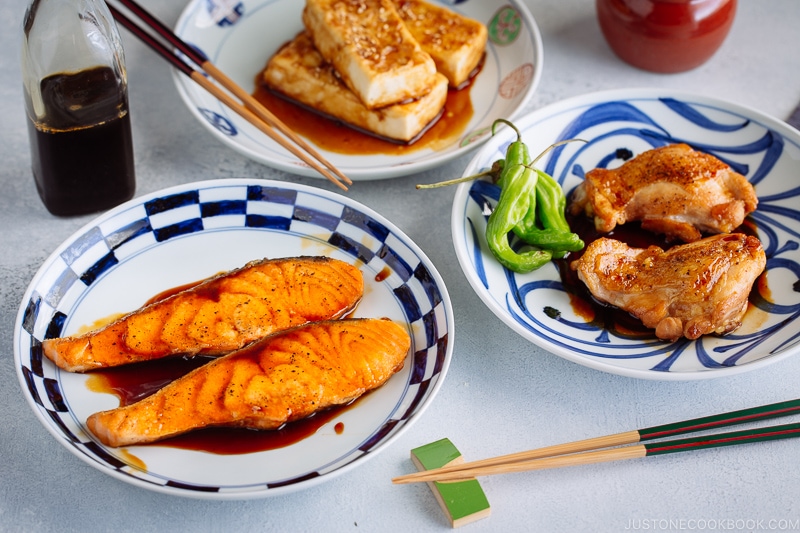
What Exactly is Teriyaki?
First of all, if you aren’t aware, teriyaki (照り焼き) in Japanese actually describes a cooking method. “Teri” (照り) means luster and “yaki” (焼き) means grilled, broiled or pan-fried. It’s not the sauce we refer to, but rather how the food is prepared. So teriyaki essentially refers to any grilled/broiled/pan-fried food with shining glaze.
When the food is prepared in “teriyaki” style, we season the food with soy sauce, sake, and mirin (and sometimes sugar). Since the meaning of ‘teriyaki’ has been deviated by simply referring to a Japanese sauce outside of Japan, I’d just refer to it as a sauce in this post.
As mentioned briefly, we actually don’t use bottled teriyaki sauces in Japan as we make our own sauce. Sometimes I get asked which brand of teriyaki is the best and I can only say the best teriyaki sauce is homemade and it’s as easy as 1-2-3 steps shown in this recipe.
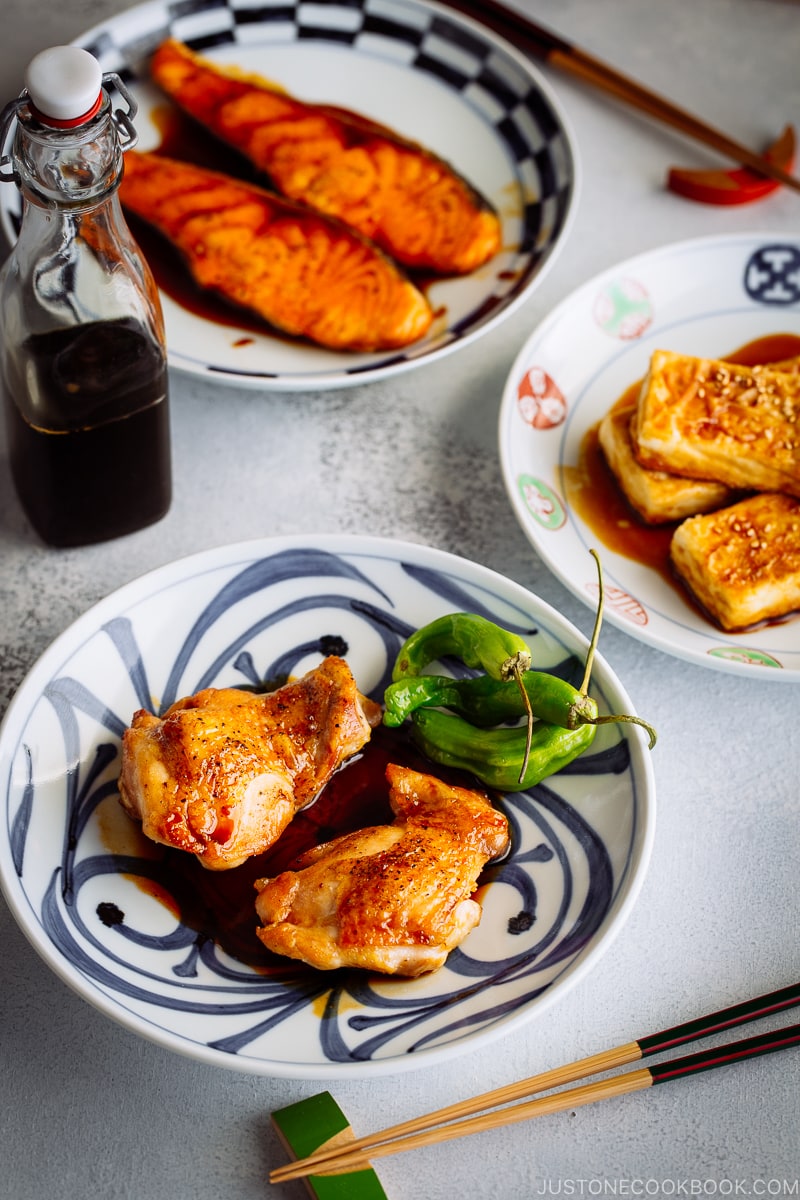
How to Make Authentic Teriyaki Sauce – The Japanese Method
Ingredients You’ll Need
To make the teriyaki sauce, you’ll need only 4 most basic ingredients from the Japanese pantry:
- Soy sauce – Please use only Japanese soy sauce as it has a different flavor profile from Chinese, Thai, or Korean soy sauce. You could use low-sodium, tamari, or gluten-free versions.
- Sake – This is Japanese rice wine. It imparts a hint of fruitiness and complexity to the sauce. You can find sake at Asian grocery stores with an alcohol license, or at any major liquor stores. I recommend Gekkeikan, Sho Chiku Bai, or Ozeki.
- Mirin – This is Japanese sweet rice wine. It adds a delicate sweetness and fragrance and gives the sauce a nice luster.
- Sugar – Sugar adds sweetness and balances the savory taste of the teriyaki sauce. It is also crucial to give the sauce its sticky texture. We don’t use honey or maple syrup because they have a strong flavor. But, if that’s your preference, go ahead but take care as it burns easily.
Both sake & mirin are important ingredients for teriyaki-style cooking. If you can’t consume alcohol, please read the substitution options in my sake and mirin pantry pages. I also included specific substitutions in the recipe card below.
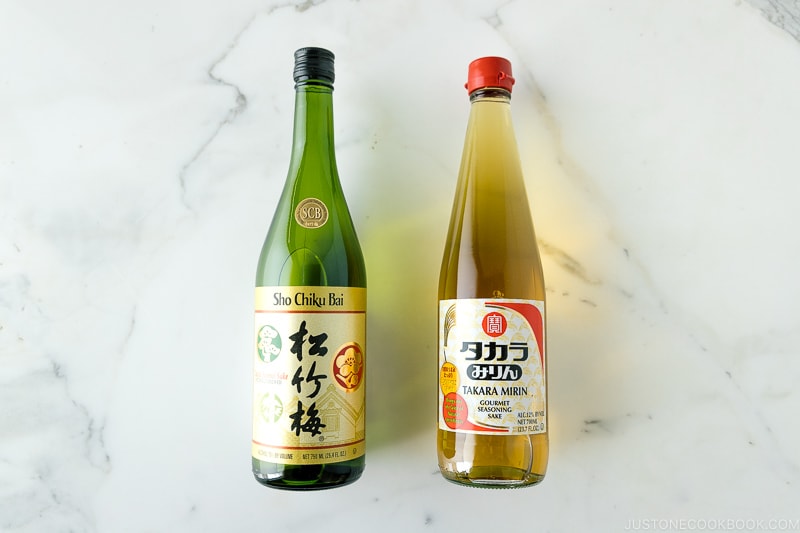
The basic formula is to use equal parts of the first three ingredients, then adjust the amount of sugar to your liking. The easiest way? Have this formula memorized:
Ratio For Homemade Teriyaki Sauce
2 Tbsp soy sauce:2 Tbsp sake:2 Tbsp mirin:1 Tbsp sugar
Overview: 3 Easy Cooking Steps to Make The Best Teriyaki Sauce
- Heat: In a medium-sized saucepan, combine sake and mirin, and add the soy sauce and sugar. Bring the mixture to a boil over medium heat and continuously stir the sauce until the sugar is dissolved.
- Thicken: Once boiling, lower the heat to medium-low. Simmer for 10-15 minutes or until the sauce is thickened.
- Enjoy: Remove from heat and cool. The sauce will continue to thicken as it cools.
Notes on Non-Japanese Style Teriyaki Recipes
I’ve seen many non-Japanese recipes include ingredients such as rice vinegar or apple cider vinegar, brown sugar, sesame oil, or fresh garlic in the teriyaki sauce. Some also use ground ginger or garlic powder. I would not recommend them if you wish to follow the authentic Japanese cooking method.
The addition of these ingredients produces a slightly different flavor and potentially overpowers a dish. Japanese cuisine is all about delicate taste.
That said, you have the freedom to do what you like and adapt a recipe to your liking. Depending on the protein or vegetable, I sometimes add grated ginger, minced garlic, and butter in my teriyaki sauce for extra flavors.
How to Thicken Teriyaki Sauce
Americanized teriyaki sauce is very thick and syrupy compared to the teriyaki sauce in Japan. Japanese teriyaki sauce is reduced in the pan until it reaches a thicker consistency. We do not use cornstarch slurry or honey, like other non-Japanese versions.
Of course, there is no strict rule on the recipe, you can still make a thick sauce by adding a mixture of 2 Tbsp water and 1 Tbsp cornstarch or potato starch if that’s your preference.
Adjust the ratio of ingredients each time you make a teriyaki recipe. Homemade teriyaki sauce is healthier than store-bought ones since it does not contain any additives.
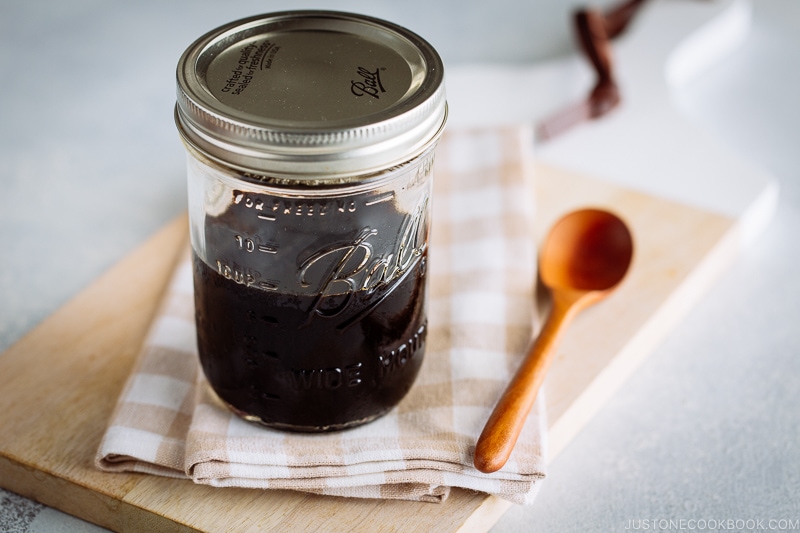
How to Store Your Homemade Teriyaki Sauce
You can use the homemade sauce immediately as needed or store it in an airtight, sterilized jar like mason jar in the refrigerator for up to 2-3 weeks.
Teriyaki sauce is great to make ahead so you can always reach for the sauce when you need to cook up something quick for a weeknight meal.
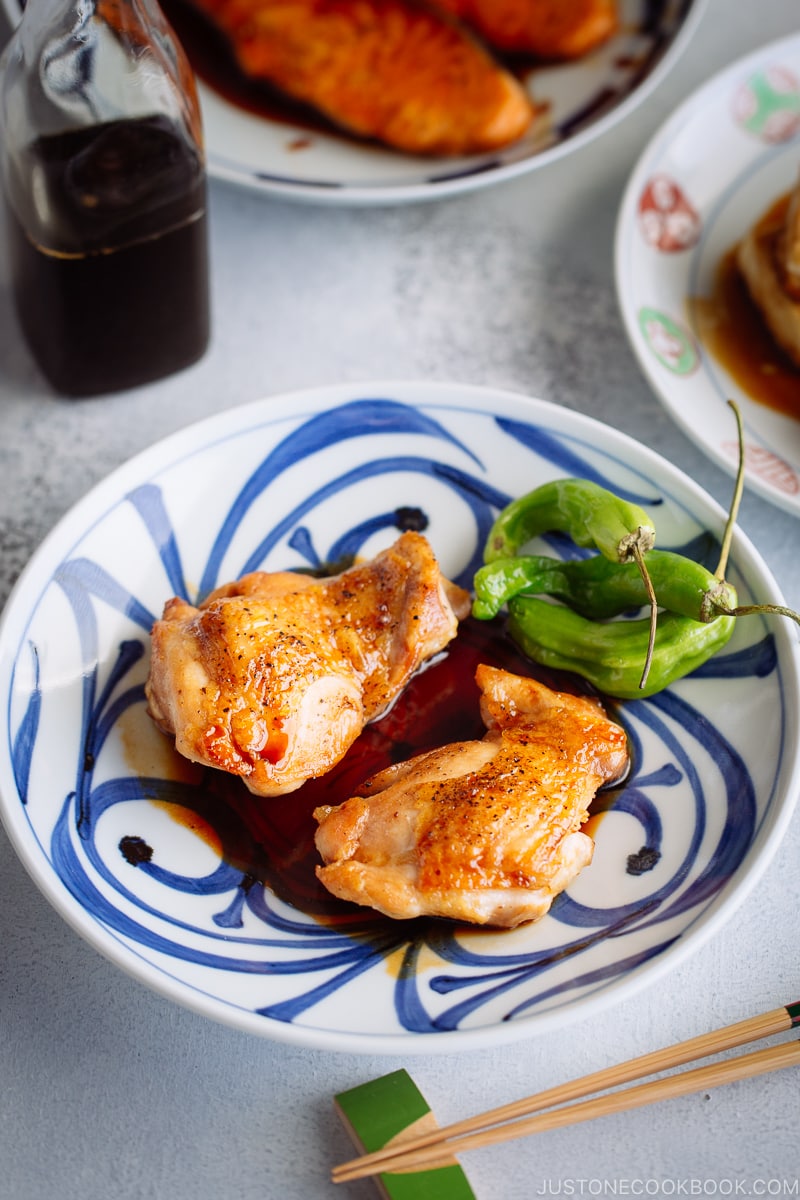
How to Use This Homemade Teriyaki Sauce
The wonderful thing about teriyaki sauce is its versatility. Here are some of my favorite ways to use this sauce:
- As a marinade for meat or seafood
- As a glaze over your grilled or pan-fried dishes
- In stir-fries
Once you start to experiment with your own teriyaki sauce, you will have fun dishing out different delicious recipes with this all-purpose seasoning.
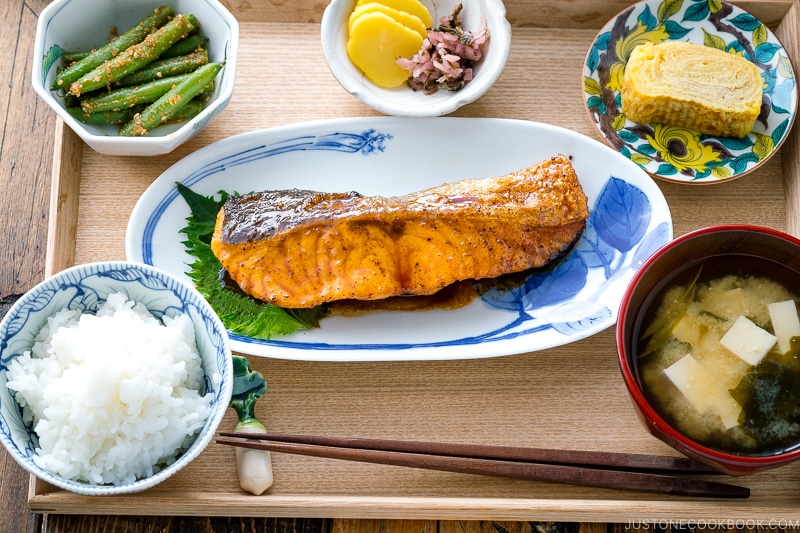
Delicious Recipes with Homemade Teriyaki Sauce
- Chicken Teriyaki
- Pan-Fried Teriyaki Tofu Bowl
- Teriyaki Burger
- Teriyaki Salmon
- Beef Teriyaki
- Teriyaki Chicken Meatballs
- Teriyaki Chicken Quesadilla
Wish to learn more about Japanese cooking? Sign up for our free newsletter to receive cooking tips & recipe updates! And stay in touch with me on Facebook, Pinterest, YouTube, and Instagram.
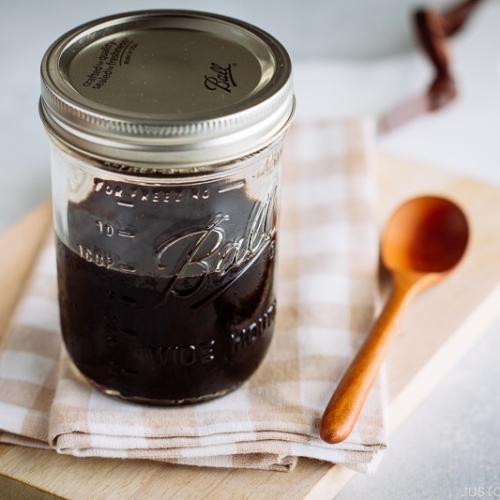
Teriyaki Sauce
Video
Instructions
- Gather all the ingredients. See Notes for half-portion ingredients and substitutions for sake and mirin.

- In a saucepan, add ½ cup sake and ½ cup mirin.

- Add ½ cup soy sauce and ¼ cup sugar.

- Bring the mixture to a boil over medium heat and continuously stir the sauce until the sugar is dissolved. Once boiling, lower the heat to medium low. Simmer for 10–15 minutes or until the sauce is thickened.

- As you mix the sauce or tilt the saucepan, small bubbles will start to rise and appear on the surface. When this happens, the sauce is ready to use. Pour the sauce into a sterilized jar and leave uncovered to cool. The sauce will thicken as it cools.

To Store
- Once cooled, close the lid and store in the refrigerator for up to 2–3 weeks.
To Use the Teriyaki Sauce
- Teriyaki Salmon: Season salmon fillets with salt and freshly ground black pepper. Lightly coat the salmon with all-purpose flour. Heat a frying pan over medium heat, then add cooking oil or butter. Add the salmon to the pan and cook it on one side for 3 minutes. Once nicely browned, flip the salmon. Add 1 Tbsp sake and cover to cook for another 3 minutes. Remove the lid and spoon the Teriyaki Sauce over the salmon to coat well.

- Teriyaki Chicken: Season boneless, skin-on chicken thighs (or chicken breast, if you prefer) with salt and freshly ground black pepper. Lightly coat the chicken with all-purpose flour. Heat a frying pan over medium heat, then add cooking oil or butter. Add the chicken to the pan, skin side down, and cook until browned. Flip the chicken and cover the pan until the chicken is cooked through. Wipe off the oil from the frying pan with a paper towel. Spoon the Teriyaki Sauce over the chicken to coat well.

- Teriyaki Tofu: Drain well a block of firm tofu (pressing it or microwaving it for 1 minute). Cut the tofu into steaks (slabs) and lightly coat them with all-purpose flour. Heat a frying pan over medium heat, then add cooking oil. Add the tofu steaks and cook on both sides until golden brown. Spoon the Teriyaki Sauce over the tofu steaks to coat well.

- You can also pour additional Teriyaki Sauce onto the finished dish.

Notes
- with alcohol: ½ cup dry sherry or Chinese rice wine
- without alcohol: ½ cup water
- with sake: ¼ cup sake + ¼ cup water + 3 Tbsp sugar
- without sake: ½ cup water + 3 Tbsp sugar
Nutrition
Editor’s Note: This post was originally published on Jun 12, 2013. It’s been updated with a new video and images in January 2018 and with updated content in August 2022.
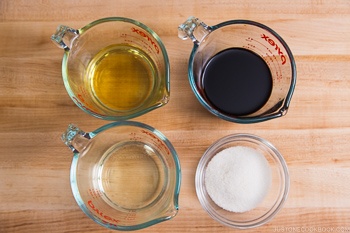
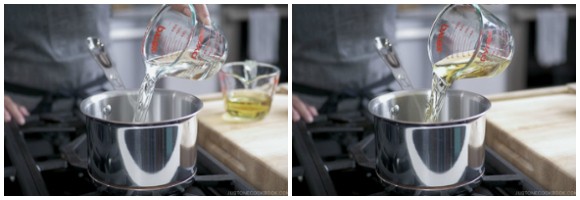
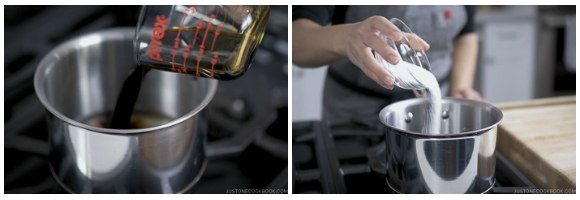
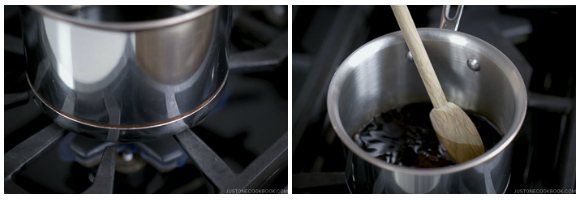
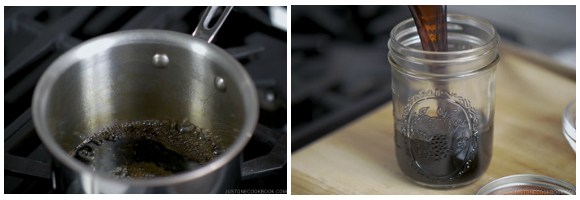
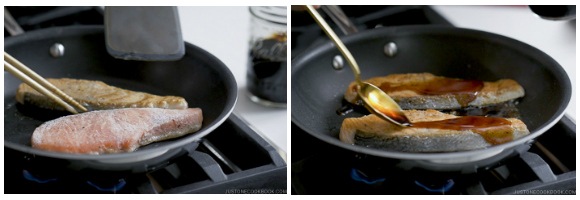
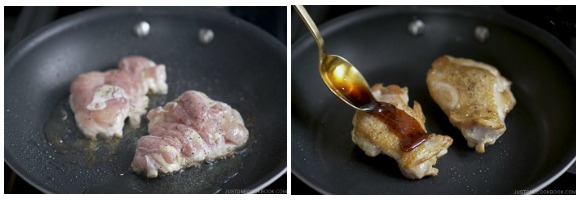
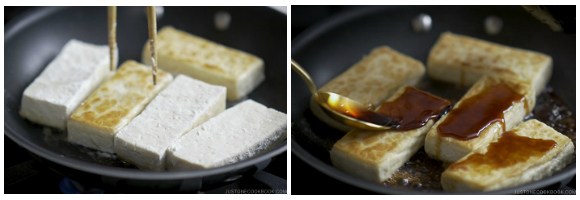
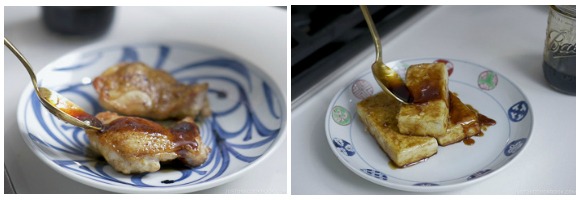










My go to sauce recipe, I use my home brewed hon murin and a little ginger and garlic. Thx for the recipe!!!!
Hi T.C! Wow! Home-brewed Hon Mirin must be delicious!
Thank you so much for trying Nami’s recipe and sharing your experience with us!
I am making this recipe as gifts and I have gotten great reviews. I have always wanted to make my own and this recipe is so easy and just as good as any restaurant. Thank you Nami-chan!
Hello, Linda! Aww. Nami feels very happy to learn that everyone enjoys the flavor of her Teriyaki Sauce.
Thank you so much for telling us your experience. You brightened our day!🥰
Hello and thank you for this. I’m planning to use a 20 year aged black hon mirin and a 4 year aged traditional soy sauce (tsuru bisiho), do the ratios change or is there anything I should be aware of with these ingredients? Thank you again and all the best 👍
Hi Ken! I must say, both of these products are of excellent quality and offer a rich and deep flavor.
If you plan to use black hon mirin in this recipe, we recommend adjusting the amount of sugar used as it is already quite sweet. You can start by using half the amount of sugar and then add more according to your taste. Hopefully, this suggestion will be helpful to you.
Thank you for reading Nami’s post!
Thank you!
This is my favourite recipe for Teriyaki Sauce, so much better than anything you can buy. My latest batch is cooling as I type, thankyou. x
Hi Tricia! Aww. We are so happy to hear you enjoyed Nami’s recipe.
Thank you very much for trying her recipe and for your kind feedback.
Happy Cooking!
I made two versions. One had a little honey because I love honey! It had a bit of ginger and garlic as well. I also have the one Nami instructed with sake being alternated with water. Both are tasty. Can I use these for marinating also? I’d love to try these on the grill, I use my siblings as my guinea pigs. And they like grilled meats. :p
Hello, Tally! Thank you so much for trying Nami’s recipe and for your kind feedback!
Yes. This Teriyaki Sauce may be used as a marinade, a glaze over grilled or pan-fried meals, or in stir-fries.
We hope you enjoy it in a variety of ways!
I tried this several times in the past months. Just simply great, whether with salmon, or thinly-sliced beef. I used this also as a soup base for noodle soup! Thank you!
Hi Jowell! We are so happy to hear you enjoyed Nami’s Teriyaki Sauce recipe!
Thank you so much for trying her recipe and for your kind feedback.
Happy Cooking!
Thank you so much for this! It is almost exactly the recipe from my childhood which I lost. My grandfather spent a good amount of time in China and Japan while in the Navy (USA) and he brought a bunch of authentic recipes home with him. So I grew up with a Teriyaki recipe very close to this, it called for Sake but most recipes to be found online don’t use it and I remember being told it was a very important ingredient. They made it so often that it wasn’t even really written down, though at one time I did write it out as a teenager. However it was lost to time and my dad’s memory isn’t what it used to be. This was such an amazing find, now I have to check out all your other recipes! I haven’t tried the recipe yet but it’s close enough that I know it’s awesome!!!
Hi Jean! Aww. We are so happy to hear your story. We hope you enjoy Nami’s Teriyaki sauce and that it tastes similar to what you remember.
Thank you so much for taking the time to read Nami’s post and try her recipes.
Hi!
For storage, is it really only 2-3 weeks? I’ve heard some people claim longer than that, even months. Does it go bad fast or lose flavor after a month? Alternatively, how do you tell if Teriyaki Sauce has “gone bad”?
Hello Bob, Thank you for taking the time to read Nami’s post and trying her recipe!
If you properly use and store the Teriyaki Sauce in a clean container in the refrigerator, you can keep it for longer than our recommended period. However, we suggest consuming it within a couple of weeks, as the flavor may begin to alter over time.
If you notice any items floating on top of the sauce or a change in color or fragrance, it may have gone bad.
We hope this helps!
I didn’t stir the sauce while it was boiling, does this affect the final product
Hi Pat! Thank you for attempting Nami’s recipe!
If the sugar is dissolved and all of the sauce ingredients are combined, it should be good.
We hope this helps!
Hello! I have allergies to some odd foods and therefor have to make a lot of items myself. That being said, the freezer is my best friend. I can make big batches and freeze in individual portions for ease. So my question is, can I freeze this? I know if lasts 2-3 weeks and I know I can make small batches, but I would love freeze it!
Hi Marie, Thank you for reading Nami’s post and trying her recipe.
Sure, you can freeze this. However, the sauce may not freeze hard due to the sugar.
We hope this helps!
Hi, I am interested in making this teriyaki sauce more kids friendly due to the amount of alcohol involved. Is it possible to do a Nikiru 煮きるby lighting it up with fire ? If so, should I do it with or without the soy sauce and sugar added ?
Hi James! Thank you for reading Nami’s post and trying her recipe!
Yes, you can do that, but please be careful with the fire. Without soy sauce and sugar is the best, and add them later.
We hope this helps!
Hi, I followed this recipe exactly except I substituted sake with Chinese cooking wine. At the 20 minute mark I noticed the sauce still hasn’t thickened and when I tasted it it was bitter. Sugar burned before the sauce was able to thicken? What could’ve went wrong?
Hi Luan! Thank you for trying Nami’s recipe!
It sounds like your Teriyaki Sauce got overcooked and burned the sugar.
The Teriyaki Sauce is not very thick when it’s warm and lightly thickened, and as it gets cool, it becomes more like a sauce.
We recommend watching Nami’s video and seeing the final stage of the sauce.(Video @ 1:11)
We hope this helps!🙂